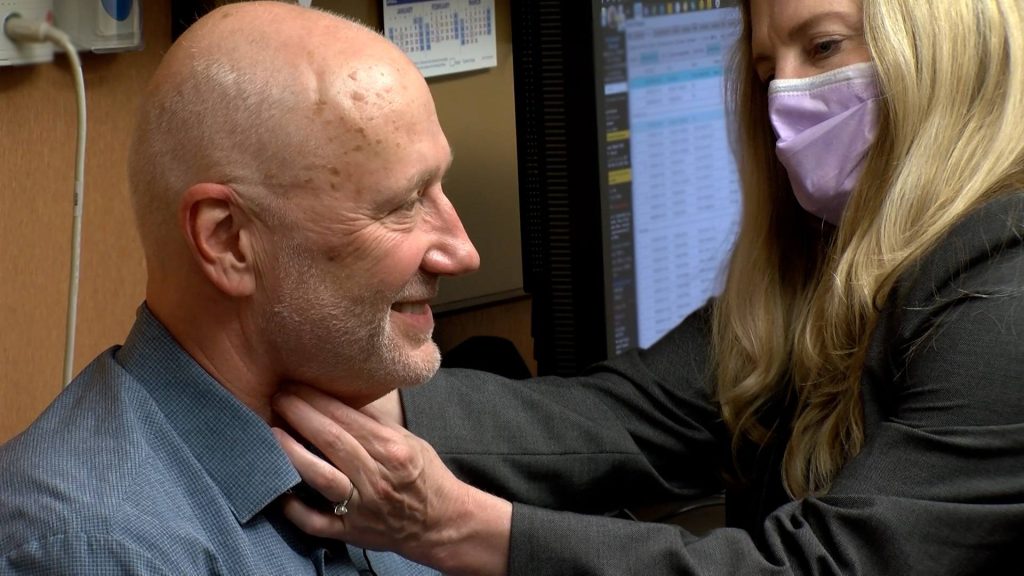-
Featured News
Minnesota man takes shot at getting his voice back

A Minnesota man who has a long career in the communications business suddenly has difficulty speaking. And Mayo Clinic experts helped him get his voice back with a treatment that's often used to prevent wrinkles on the face.
Watch: Minnesota man takes shot at getting his voice back.
Journalists: Broadcast-quality video (2:24) is in the downloads at the end of this post. Please courtesy: "Mayo Clinic News Network." Read the script.
"Let's go through our agenda and what's happening."
It's the start of Mayo Clinic News Network's daily team meeting. But Communications Director Ron Petrovich is having trouble communicating.
"My voice sounds scratchy right now. I'm having ... it's very inconsistent. Right now, it feels like it's closed right there," Ron says. "And it's not painful. But it just comes out of the blue."
Initially, he chalked it up to a cold or allergies. But his hoarse voice got progressively worse over a year's time.
"It feels very similar to — like, you know how when you are on a walk — when you have a cramp in your calf? That's what it feels like in my throat," he says.
After undergoing several tests at Mayo Clinic, Ron's health care team made a diagnosis of spasmodic dysphonia — involuntary muscle spasms of the vocal folds in the voice box.
"Ron has adductor spasmodic dysphonia, meaning the muscles spasm and close the fold. So he gets these intermittent strange, strangled sounds," says Dr. Diana Orbelo, a speech-language pathologist at Mayo Clinic. "We have found in the research that there are some differences in the brain, but we don't know if those differences are the cause of spasmodic dysphonia or whether they are a result."
For temporary relief, Ron was given what some might think is an unusual treatment — injection of Botox into his vocal folds.
"It inhibits the ability for that muscle to be strong and work hard. So it basically weakens it or partially paralyzes it," says Dr. Orbelo.
Within a few days of his first injections, Ron got his voice back.
"It feels so much better. I used to have to think about every single word, how I was going to project. And now I can just talk naturally," he says.
Mayo Clinic experts say the positive effects of the injections usually wear off after about three months.
"I wish we had a cure. And, unfortunately, we don't know how to resolve it fully. We're really just treating a symptom. So we would anticipate that he would get repeated injections," says Dr. Orbelo.
"I was very concerned about it. I was thinking, 'You know, if there's no cure and if this doesn't work, then what do you do?' So I'm thrilled. And I'm very happy at the course we're taking right now," Ron says.
For the safety of its patients, staff and visitors, Mayo Clinic has strict masking policies in place. Anyone shown without a mask was either recorded prior to COVID-19 or recorded in a nonpatient care area where social distancing and other safety protocols were followed.







